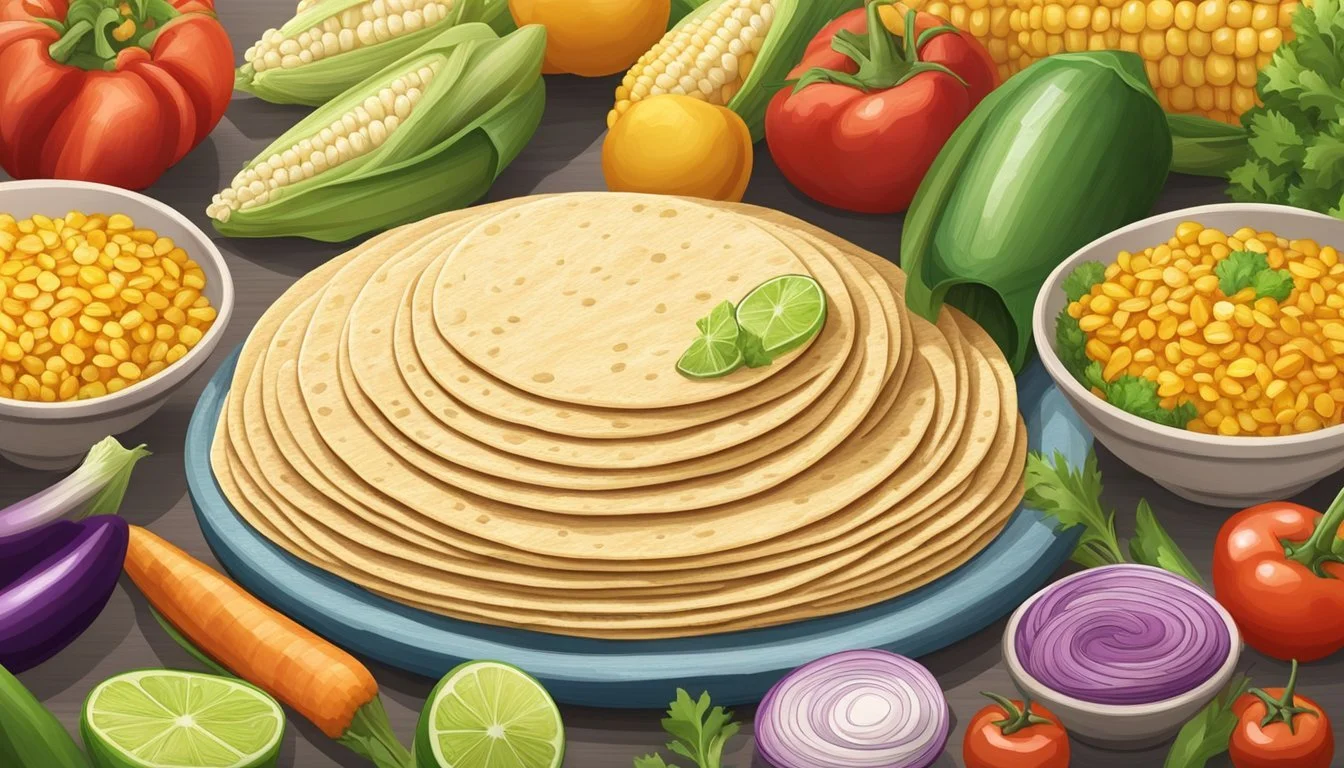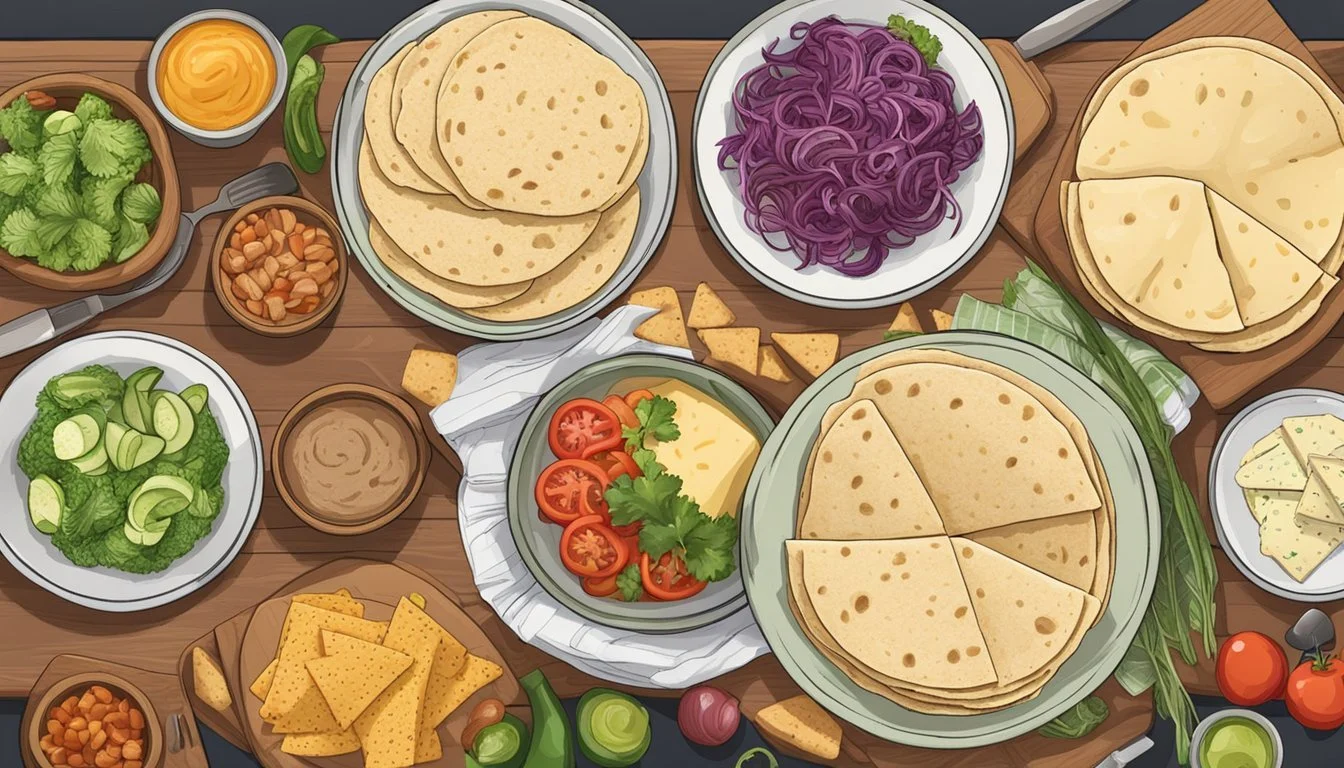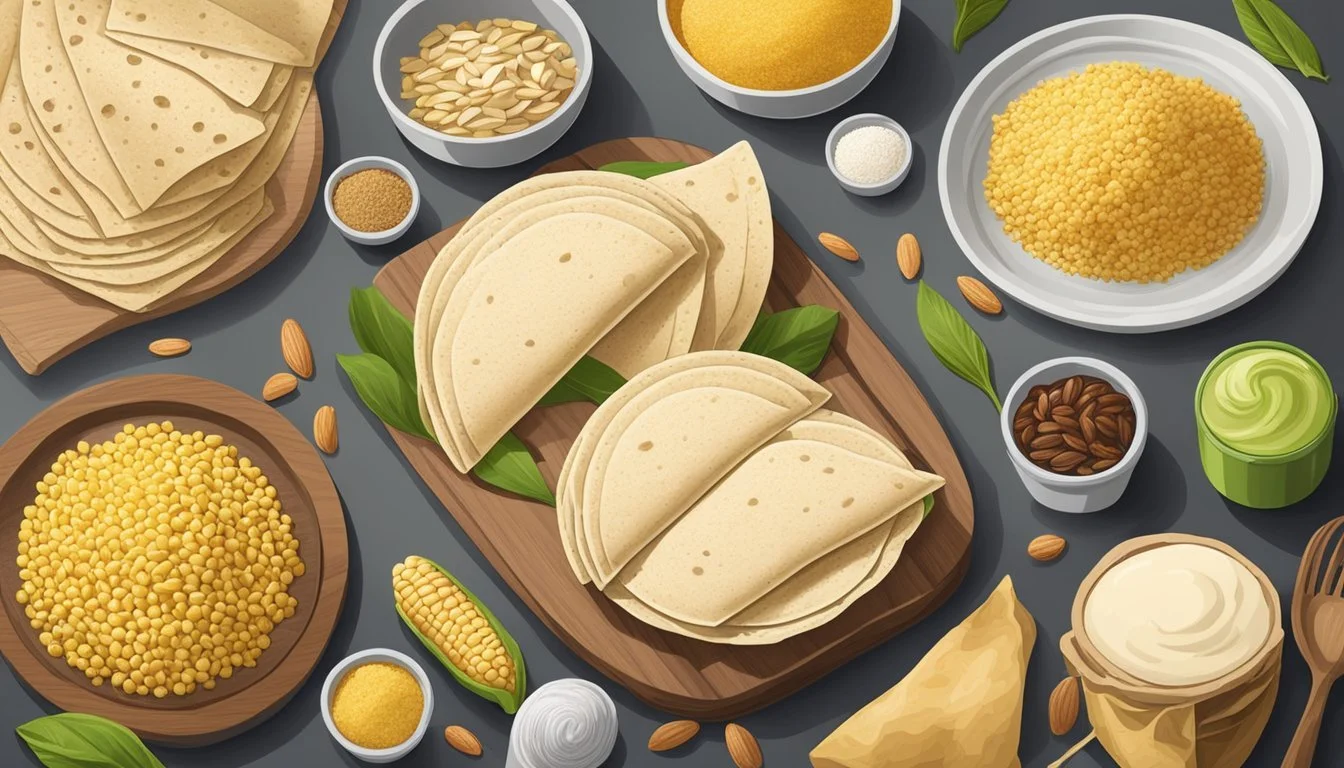Are Tortillas Gluten-Free?
Uncovering the Truth About This Popular Food
When it comes to tortillas, a staple in many cultures and cuisines, the question of whether they are gluten-free is a common concern for those with celiac disease or gluten sensitivity. Traditionally, tortillas are made from corn or wheat flour. While corn is naturally gluten-free, wheat contains gluten, making standard wheat flour tortillas unsuitable for a gluten-free diet.
However, with the growing awareness of gluten-related health issues, manufacturers and home cooks have found alternatives to create gluten-free tortillas. Brands have developed products using ingredients like gluten-free flour blends, cauliflower, and almond flour, which cater to the gluten-free population. These products are designed to offer the flexibility and taste of traditional tortillas while ensuring they are safe for those avoiding gluten.
The availability of gluten-free tortillas has expanded significantly, with options ranging from ready-made products to simple recipes that can be prepared at home. These gluten-free variants often incorporate alternative binding agents, such as xanthan gum or psyllium husk, to emulate the texture and durability of their wheat-based counterparts. As such, individuals on a gluten-free diet now have numerous options to enjoy tortillas without compromising their health or flavor preferences.
What is Gluten?
Gluten is a family of proteins predominantly found in wheat, barley, rye, and triticale—a cross between wheat and rye. It is primarily composed of two main proteins: gliadin and glutenin, with gliadin being responsible for most of the negative health effects. When flour mixes with water, these proteins form a sticky network that has a glue-like consistency, which gives dough its elasticity and enables bread to rise during baking.
The presence of gluten is a concern for individuals with celiac disease, an autoimmune disorder where the ingestion of gluten leads to damage in the small intestine. Symptoms can range from digestive problems to more serious health concerns, leading to the necessity of a gluten-free diet. This diet eliminates foods containing gluten to manage symptoms and intestinal damage.
For those without celiac disease, but with a sensitivity to gluten, similar dietary restrictions may help alleviate associated discomfort. Such a diet involves careful reading of food labels to avoid gluten, which is not only in bread products but also in many processed foods, sauces, and beverages.
It's critical to understand that "gluten-free" does not inherently mean healthier. Some gluten-free products might be higher in fat and calories as they often use alternative binders and flours. Thus, individuals should consume them in moderation, especially when managing weight or other health-related issues.
In summary, gluten is a protein causing adverse reactions in some individuals, necessitating a diet without gluten-containing foods to maintain their health and wellbeing.
Understanding Tortillas
Tortillas are a staple in many cuisines, especially within Mexican dishes. They come in two primary types: flour tortillas and corn tortillas. Each has distinct ingredients that cater to different dietary needs and preferences.
Flour Tortillas: Typically, flour tortillas are made from wheat flour, water, salt, and a fat source like oil or lard. For those with gluten sensitivity or celiac disease, traditional flour tortillas are not suitable, as wheat contains gluten.
Corn Tortillas: On the other hand, corn tortillas are made from masa harina, a dough from ground corn treated with lime, water, and sometimes salt. They are inherently gluten-free since they do not contain any wheat. However, cross-contamination or additives in industrial manufacturing can introduce gluten.
Ingredients Table:
Ingredient Flour Tortillas Corn Tortillas Primary Base Wheat Flour (gluten) Masa Harina Liquid Water Water Fat Oil or Lard Typically None Binding Gluten None Flavoring Salt Salt (optional)
When selecting tortillas, individuals should carefully review the ingredients list for potential gluten sources. Even corn tortillas can be at risk if processed in a facility that also handles wheat products. For gluten-free options, reliable brands offer certified products that guarantee the absence of gluten.
Ingredients in Traditional Tortillas
Traditional tortillas are a staple in many cuisines and are typically made from simple ingredients. The ingredients differ between flour and corn tortillas, reflecting their distinct taste and texture profiles.
Flour Tortillas Ingredients
Flour tortillas are typically made from:
All-purpose flour: The main ingredient providing structure and chewiness.
Water: This is added to hydrate the flour and form the dough.
Salt: Enhances flavor and helps strengthen the dough structure.
Baking powder: This leavening agent gives flour tortillas their slight puffiness.
Lard: Traditional fat that contributes to the tortillas' flaky texture. Substitutes can include shortening or oil.
Corn Tortillas Ingredients
Corn tortillas are commonly composed of:
Masa harina: A type of traditional nixtamalized corn flour that gives corn tortillas their unique flavor and texture.
Water: Used to mix with masa harina to form a pliable dough.
Salt: Sometimes added for taste, but not always necessary depending on the recipe.
Each ingredient plays a critical role in the taste, texture, and functionality of the tortillas, highlighting the simplicity and cultural significance of this food in various culinary traditions.
Gluten-Free Tortilla Options
For those with gluten sensitivities or celiac disease, there is a variety of gluten-free tortilla options available, ranging from ready-made commercial brands to recipes for creating your own at home.
Commercial Gluten-Free Tortilla Brands
Several brands specialize in producing gluten-free tortillas that cater to different dietary needs without compromising on taste and texture. Here are some notable examples:
Mission Gluten-Free Original Tortilla Wraps: These tortillas are known for their flexibility and neutral flavor, making them a staple in many gluten-free households.
Food for Life: Offers a range of tortillas, such as Exotic Black Rice Tortillas, which are gluten-free and made with natural ingredients.
Siete: This brand provides a selection of grain-free tortillas made from alternative flours like almond, cassava, and chickpea.
BFree: Their gluten-free options include wraps made from ingredients such as rice flour, corn starch, and tapioca starch.
Toufayan Bakery: Known for their Spinach Herb Tortilla Wraps and other varieties, they use gluten-free ingredients and avoid artificial preservatives.
La Tortilla Factory: They produce a Super Greens Tortilla made with spinach, a Golden Turmeric Tortilla, and other gluten-free options.
Homemade Gluten-Free Tortilla Recipes
For those who prefer homemade gluten-free tortillas, a basic recipe usually includes a mix of the following ingredients:
Gluten-free flour blend
Rice flour and tapioca flour
Almond flour or cassava flour
Potato starch
Water and salt
Xanthan gum to bind and add elasticity
Vegetable shortening for softness and pliability
A popular recipe might combine water, gluten-free flour blend, salt, and xanthan gum. After kneading the dough, the tortillas can be rolled out and cooked on a hot surface until they're soft or slightly browned. Here are two recipes that showcase the use of alternative ingredients:
Cauliflower Tortillas:
Ingredients: Cauliflower, egg, and grated parmesan cheese
These tortillas are low in carbs and grain-free, offering a nutritious and flexible option.
Mikey’s Cassava Flour Tortillas:
Ingredients: Primarily cassava flour, with a mix of other gluten-free components
Mikey’s tortillas are a good choice for those who favor products with minimal ingredients that are free from dairy and soy.
By choosing either commercially available products or experimenting with homemade recipes, individuals seeking gluten-free tortilla options have a diverse selection to satisfy their dietary preferences.
Gluten-Free Cooking Techniques
Crafting gluten-free tortillas requires an understanding of alternative ingredients and methods to achieve the desirable texture and flexibility without gluten's binding properties.
Making the Dough
For gluten-free tortilla dough, one starts by combining gluten-free flour blends with binding agents such as psyllium husk to compensate for the lack of gluten. The dough should be mixed until it comes together and is smooth. It is important to let the dough rest for a set period, usually about 15 minutes, to allow the binders to work and hydrate the flour, which improves the dough's elasticity.
Ingredients & Proportions: Getting the right blend of gluten-free flour, water, fat (like oil or lard), and a binder like xanthan gum or psyllium husk is crucial for the dough's texture.
Mixing & Resting: Once combined, the dough must rest to let the binders activate, ensuring the dough doesn't fall apart when rolled or pressed.
Shaping Tortillas
After resting, the dough is divided into small balls, to be flattened into tortillas. This can be done using either a tortilla press or a rolling pin. For a more uniform and round shape, a tortilla press is favorable, but a rolling pin also works well with light, even pressure.
Tools: A tortilla press lined with plastic wrap can be used for even, round tortillas, or a rolling pin can be employed for a more hands-on approach.
Technique: One must press or roll gently to avoid tearing the gluten-free dough, aiming for an even thickness for consistent cooking.
Cooking Methods
The shaped dough is generally cooked on a preheated, dry skillet. Cast iron skillets or griddles are often preferred for their even heat distribution, but nonstick skillets can also be effective. Each side of the tortilla should be cooked until it's slightly browned and air pockets form, typically 45-60 seconds per side depending on the skillet's temperature.
Heat & Timing: A medium-high heat allows the tortillas to cook quickly and develop small, characteristic bubbles.
Skillet Choice: A cast iron skillet or griddle brings out a nice char and flavor, but nonstick skillets are more forgiving for beginners.
By understanding the balance of ingredients, the careful shaping of dough, and the nuances of cooking each tortilla to perfection, one can create delicious gluten-free tortillas that rival their gluten-containing counterparts in both taste and texture.
Pairing and Serving Ideas
When serving gluten-free tortillas, one has plenty of pairing and serving options that can cater to various meal times, whether it's for breakfast, lunch (What wine goes well with lunch?), or dinner. For a breakfast twist, one might fill their tortillas with scrambled eggs, cheese, and a touch of salsa to create a satisfying breakfast taco.
Lunch options can be versatile as well. Turning a gluten-free tortilla into a wrap is as easy as adding a choice of protein, fresh veggies, and a smear of hummus or aioli. Gluten-free tortillas also provide an excellent base for crafting burritos. Packing them with rice, beans, cheese, and a hearty filling can make for a filling lunch or dinner option.
Dinner ideas can range from traditional to creative. A simple yet classic approach is using gluten-free tortillas as a side to accompany dishes such as fajitas or grilled meats. (What wine goes well with grilled meats?) Alternatively, one may layer them with sauce and cheese to construct a tortilla stack, baked until the edges become crisp and the cheese is melted.
Below is a quick reference table for pairing and serving ideas:
Meal Time Serving Suggestion Key Ingredients Breakfast Breakfast Tacos Eggs, Cheese, Salsa Lunch Wrap, Burritos Protein, Veggies, Cheese Dinner Tortilla Stack, Side for Main Dishes Sauce, Cheese, Grilled Meats
Remember, when choosing fillings and sides for gluten-free tortillas, ensure all components meet gluten-free standards to maintain dietary integrity.
Storing and Handling Gluten-Free Tortillas
Proper storage of gluten-free tortillas is essential for maintaining their freshness and preventing spoilage. Storage in the pantry is suitable for short-term use. Tortillas should be kept in an airtight container to avoid contact with moisture, which can lead to a stale or soggy texture. It's recommended to use them within a week.
For longer preservation, refrigeration is an effective method. Place the tortillas in a resealable plastic bag or airtight container before putting them in the refrigerator. They can last up to two weeks when refrigerated.
To freeze gluten-free tortillas, one should wrap them tightly in aluminum foil or place them in a freezer-safe bag, removing as much air as possible. Freezing can extend their shelf life for up to 2-3 months.
Defrosting Tips
When it’s time to defrost, it’s crucial to handle gluten-free tortillas with care to prevent them from becoming brittle or tearing:
Take the required number of tortillas from the freezer and thaw them in the refrigerator for several hours or overnight.
To thaw quickly, place them on a microwave-safe plate, covered with a damp paper towel, and defrost using the microwave's
defrostsetting for 20-30 seconds per tortilla.
Once defrosted, gently heat them in a dry skillet over medium heat for a few seconds on each side to restore pliability.
In summary, proper handling of gluten-free tortillas is straightforward:
Store in a dry, airtight environment.
Refrigerate for medium-term storage.
Freeze with care for long-term use.
Thaw and heat gently to ensure flexibility.
Navigating Gluten-Free Choices
When adhering to a gluten-free diet, it is crucial for individuals to carefully select the right tortillas, whether dining out or shopping at the grocery store. This attention to detail ensures safety for those with celiac disease or gluten sensitivity, especially when enjoying Mexican food. (What wine goes well with Mexican food?)
Eating Out with a Gluten-Free Diet
When individuals with gluten intolerances dine at restaurants, they should always inquire about the ingredients and preparation methods used in tortillas. Communication with the server or chef is vital to affirm that the tortillas are indeed gluten-free and to prevent cross-contamination in the kitchen. Many restaurants that offer Mexican food may provide corn tortillas, which are traditionally gluten-free, but it is important that these are not made or fried with any gluten-containing ingredients.
Shopping for Gluten-Free Tortillas
At the grocery store, customers should look for labeling that clearly indicates a product is gluten-free. For those seeking gluten-free tortilla brands, it's beneficial to research those that are certified or recommended by gluten-free organizations.
Popular Gluten-Free Tortilla Brands Include:
Siete: Offers a range of tortillas, including cassava flour-based, which are free from gluten.
Bob's Red Mill: Provides gluten-free options made with gluten-free flours such as their 1-to-1 baking flour.
Udi's: Known for a variety of gluten-free baked goods, including tortillas.
When examining gluten-free tortillas, checking the ingredient list is essential. Products made from corn, almond flour, or other gluten-free flours are typically safe choices. It's also important to verify that they are produced in a gluten-free facility to avoid cross-contamination.






